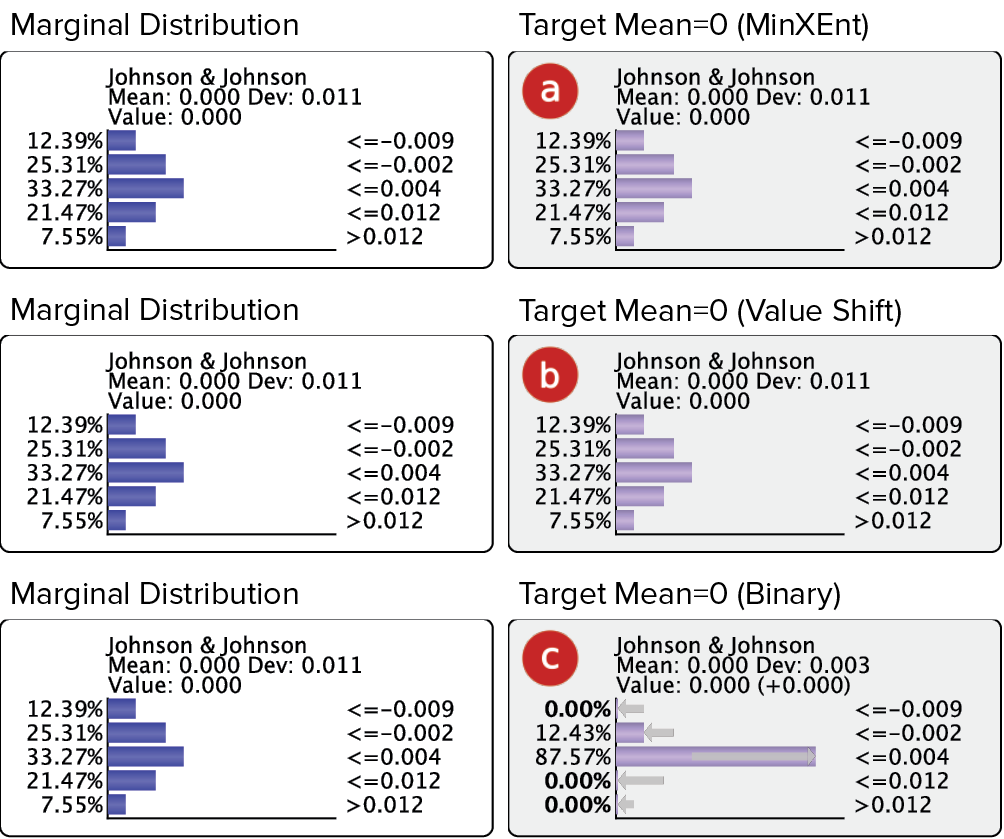Numerical Evidence
Context
-
Instead of a specific probability distribution, an observation or scenario may exist in the form of a single numerical value, which means that we need to set Numerical Evidence.
-
For instance, a stock market analyst may wish to examine how other stocks performed given a hypothetic period of time during which the average of the daily returns of JNJ was −1%. Naturally, this requires that we set evidence on JNJ that has an expected (mean) value of −0.01 (=−1%).
-
However, this task is not as straightforward as it may sound. The question will become apparent as we go through the steps to set this evidence.
Usage
- Select the Monitor of node JNJ.
- Select Node Context Monitor > Enter Numerical Evidence.
- Next, we type “−0.01” into the dialog box for Target Mean/Value.
Observation Type
-
Additionally, as was the case with Probabilistic Evidence, we have to choose the type of validation, but we now have three options under Observation Type:
-
No Fixing, which is the same as the green button , i.e., validation with static likelihood.
-
Fix Mean, which is the same as the purple button , except that the likelihood is dynamically computed to maintain the mean value, although the probability distribution can change as a result of setting additional evidence.
-
Fix Probabilities, which is the same as the purple button , i.e., validation with dynamic likelihood.
-
Distribution Estimation Methods
-
Apart from setting the validation method, we also need to choose the Distribution Estimation Method as we need to come up with a distribution that produces the desired mean value.
-
Needless to say, there is a great number of distributions that could potentially produce a mean value of −0.01. However, which one is appropriate?
-
To make a prudent choice, we first need to understand what the evidence represents.
-
Only then can we choose from the three available algorithms for generating the Target Distribution that will produce the Target Mean/Value.
Special Cases of Numerical Evidence
- If the Numerical Evidence is equal to the current expected value, using MinXEnt (a) or Value Shift(b) will not change the distribution. Using the Binary algorithm (c), however, will return a different distribution (except in the context of a binary node).

